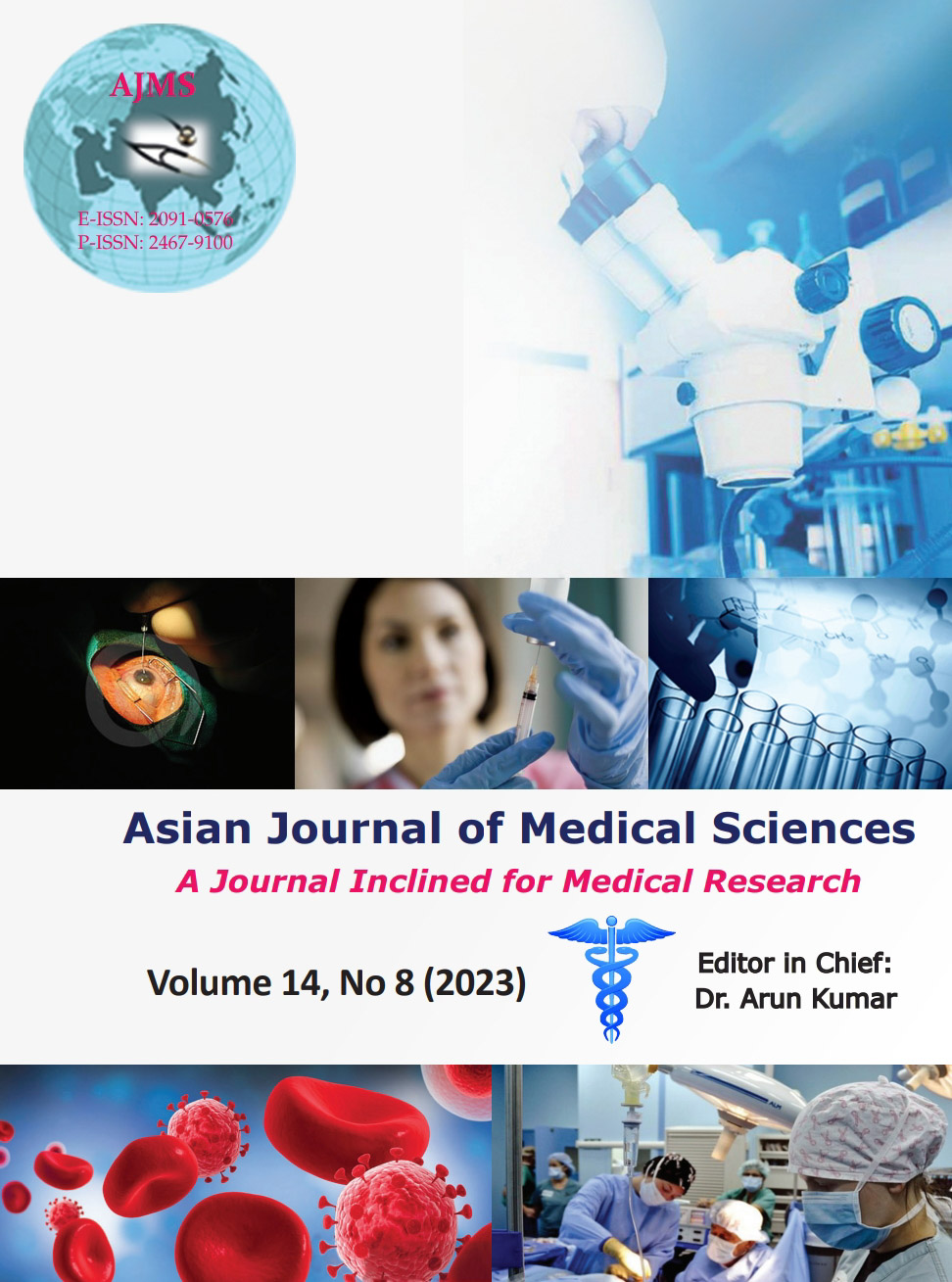Profile of optic atrophy presented in the neuro-ophthalmology department of the tertiary eye care center
Keywords:
Profile; Optic atrophy; Causes; Congenital; AcquiredAbstract
Background: Optic atrophy is a clinical presentation in which the optic disc appears pale due to irreversible damage of retinal ganglion cells and axons in the anterior visual pathway.
Aims and Objectives: The aim of this study was to determine the profile of optic atrophy cases in the neuro-ophthalmology department of a tertiary eye hospital and to identify the common causes and associated visual impairments.
Materials and Methods: This was a cross-sectional study conducted from January 2021 to December 2021, using convenience sampling method for data collection. Demographic data, medical history, and examinations were conducted on all included patients. Optic atrophy secondary to glaucomatous optic nerve damage was excluded. This study included both children and adults with both congenital and acquired patients with optic atrophy. Best-corrected visual acuity (BCVA) was recorded and anterior segment examinations were conducted using a torchlight to assess pupillary reaction and slit lamp to assess other anterior segment details. The posterior segment was evaluated on a dilated pupil with a handheld magnifying 90D lens and a slit lamp. Color vision and contrast sensitivity and visual field assessments were performed whenever possible.
Results: Out of 127 patients enrolled, 55.1% were male and 44.9% were female. The median age was 40, with a minimum age of 4 years to a maximum of 85 years old. Twenty-one percent were below 20 years old and they were associated with congenital causes, hydrocephalus and sequelae to bilateral papillitis. The most common age group was 40–50 years, comprising 21.3%. The total of eyes presented with optic atrophy was 214. Unilateral involvement of the eye was 31.5%, the patients with the right eye in 18.9% and the left eye in 12.6%. Both eye optic atrophies were found in 68.5%. The most common cause of optic atrophy was non-arteritic anterior ischemic optic neuropathy (NAION) in 22.8% of cases, the second common cause was papilledema in 16.5%, and then, traumatic optic neuropathy comprised 15.7% of patients. BCVA in the right eye was <6/60 in 58.3% of cases and in the left eye 56.7%.
Conclusion: Optic atrophy did not show sex predisposition. The most common age group affected was 40–50 years, and patients above 40 years comprised nearly half of the patients. Bilateral optic atrophy was common. The most common cause of optic atrophy was NAION, followed by papilledema, traumatic optic neuropathy, and optic neuritis. Optic atrophy is one of the leading causes to irreversible blindness.
Downloads
Downloads
Published
How to Cite
Issue
Section
License
Copyright (c) 2023 Asian Journal of Medical Sciences

This work is licensed under a Creative Commons Attribution-NonCommercial 4.0 International License.
Authors who publish with this journal agree to the following terms:
- The journal holds copyright and publishes the work under a Creative Commons CC-BY-NC license that permits use, distribution and reprduction in any medium, provided the original work is properly cited and is not used for commercial purposes. The journal should be recognised as the original publisher of this work.
- Authors are able to enter into separate, additional contractual arrangements for the non-exclusive distribution of the journal's published version of the work (e.g., post it to an institutional repository or publish it in a book), with an acknowledgement of its initial publication in this journal.
- Authors are permitted and encouraged to post their work online (e.g., in institutional repositories or on their website) prior to and during the submission process, as it can lead to productive exchanges, as well as earlier and greater citation of published work (See The Effect of Open Access).




